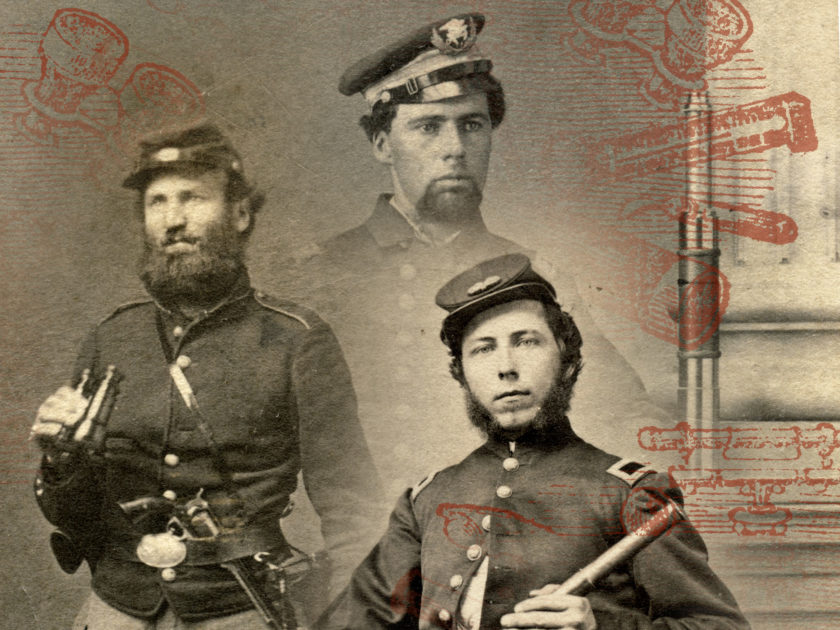 Field glasses and telescopes loomed large in the Civil War. Used by soldiers and sailors to gain an edge over their enemies, numerous references to this essential accouterment appear in period writings.
Field glasses and telescopes loomed large in the Civil War. Used by soldiers and sailors to gain an edge over their enemies, numerous references to this essential accouterment appear in period writings.
Witness Union soldiers who observed long trains steaming out of Fredericksburg two weeks before the great battle: “They evidently did not mean to make a strong stand against us; but careful scrutiny with field glasses showed four of their guns in position, ready to detain us as long as possible.”
Witness one member of the U.S. Signal Corps near Corinth after the bloodbath of Shiloh: “We use flags in the day-time and torches at night, and we can talk to each other as far as we can see through our field glasses and telescopes.”
Witness Confederate staff gathered on a hill at Wilson’s Creek after their exhausted but undisciplined forces won the day: “We watched the retreating enemy through our field-glasses, and were glad to see him go.”
Portrait photographs of soldiers posed with optics convey a sense that the subject is predisposed to studying the art of war in minute detail, each man a born strategist and master tactician in his own right, much in the same way an individual photographed with a book may be considered studious, or another posed with a letter of literary genius.
The representative portraits here pay tribute to the influence of optics during the war. It perhaps comes as no surprise that a large portion of these men served in the Signal Corps or the artillery, which especially benefitted from such visual aids.
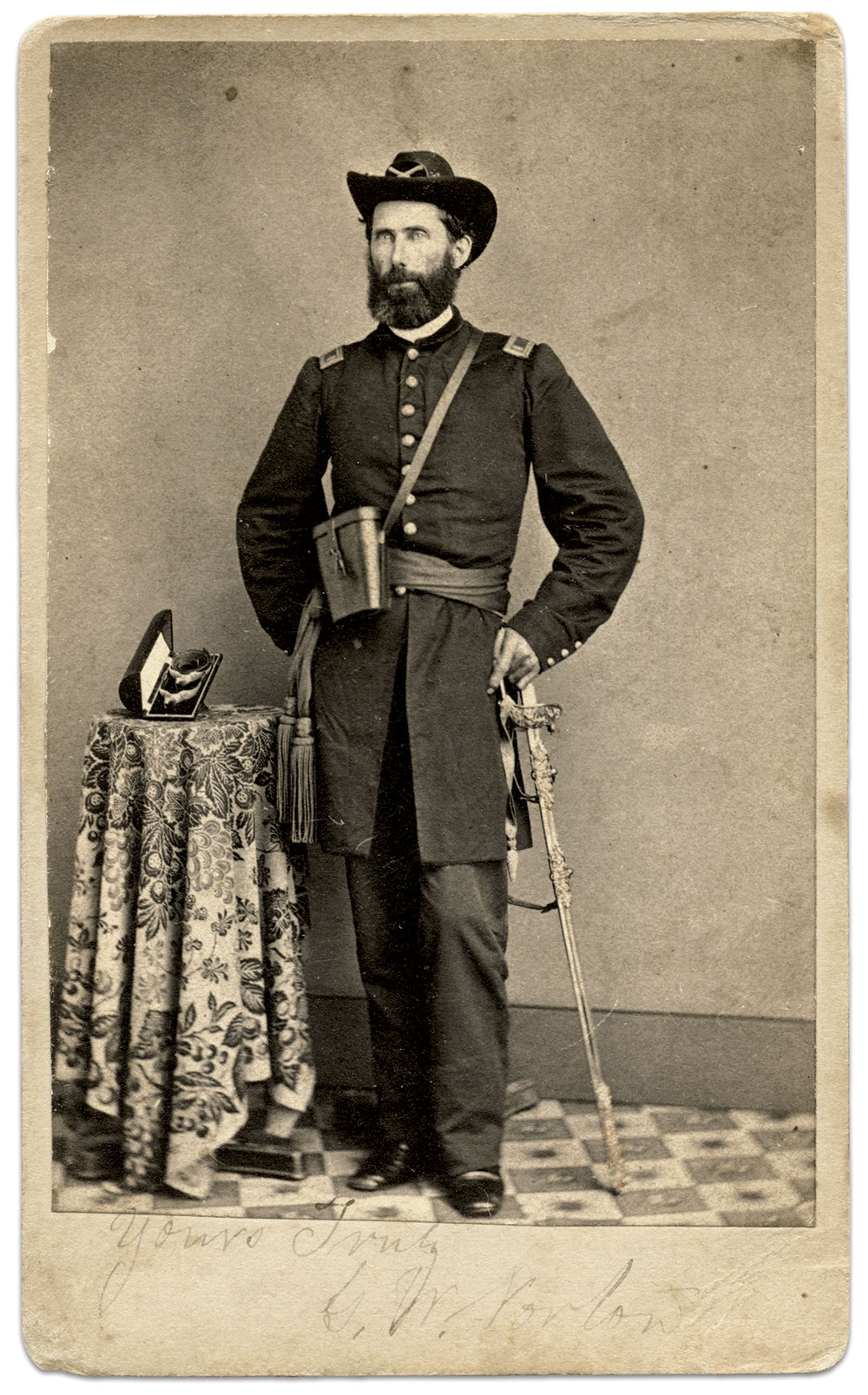
A couple months after he led his Battery H of the 1st Ohio Light Artillery into action at Gettysburg, 1st Lt. George Washington Norton posed with gifts from his enlisted men—the sword and eagle-head spurs pictured here. The sword is a high-grade Clauberg Staff & Field model, one of the best of its kind. Also prominent is the case that contains his field-glasses case. Of note is his sash, wrapped around his waist belt. MI Contributing Editor Ron Maness notes, “I find this an unusual way to wear the belt and sash, and maybe the reason was he wanted to accentuate the sash with the spurs and sword.”
A farmer in Toledo, Ohio, at the start of the war, New York-born Norton played a key role in organizing Battery H in 1861. He commanded it at Fredericksburg and Gettysburg, where the battery fired 767 rounds and suffered two men killed and five wounded, plus the loss of eight horses.
About a month after Norton posed for this portrait, he received his captain’s bars, and continued in command until he resigned in April 1864 and returned to his family in Toledo. Norton died in 1906 at age 87. Five of his children survived him.
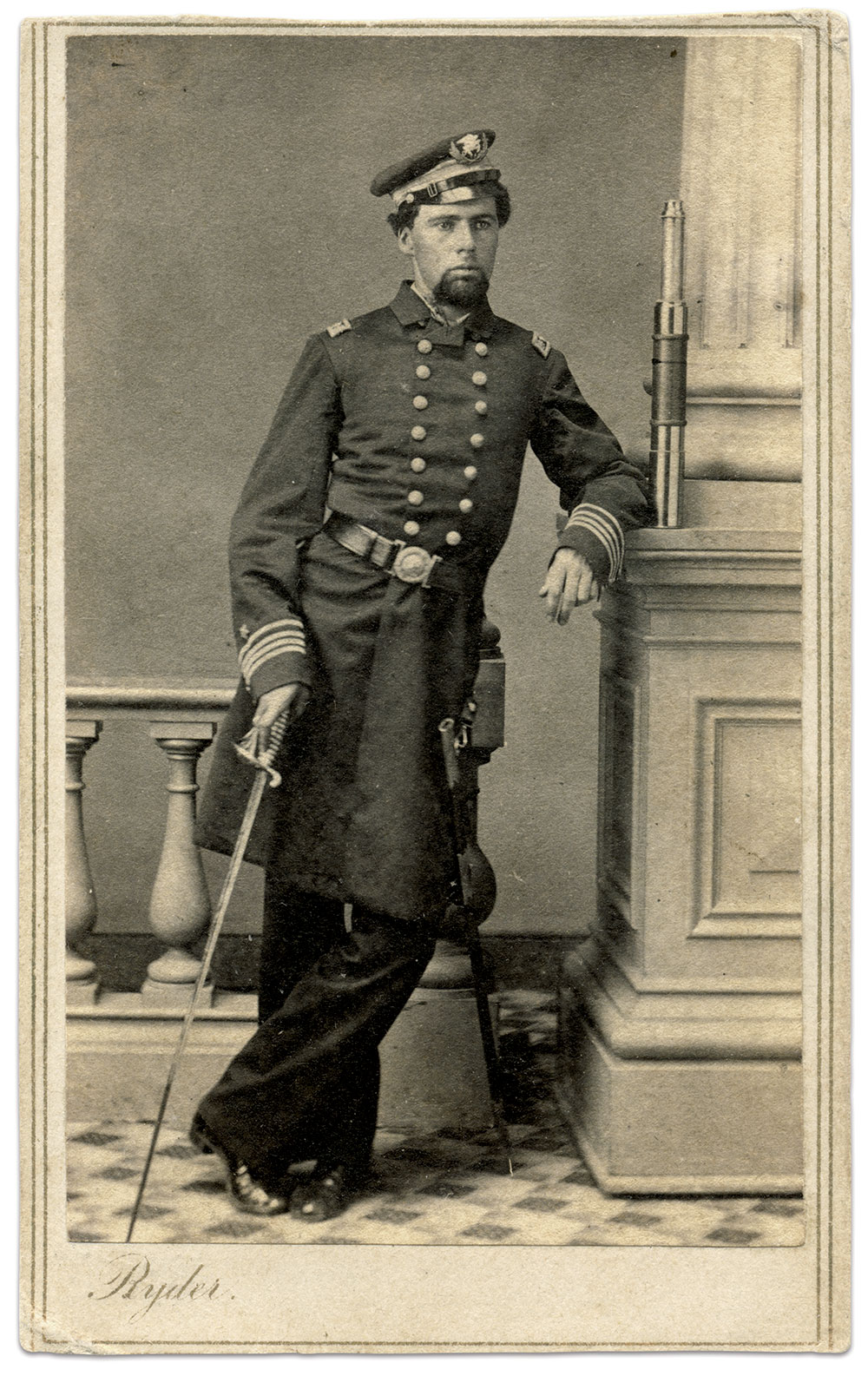
This Union navy lieutenant commander with a presentation-grade sword strikes a calm, confident pose in this circa 1863-1864 portrait. The telescope perched on the column is likely his own. The Cleveland back mark suggests he is an Ohio man who may have served with the Brown-Water Navy that operated along the Mississippi River and its tributaries.
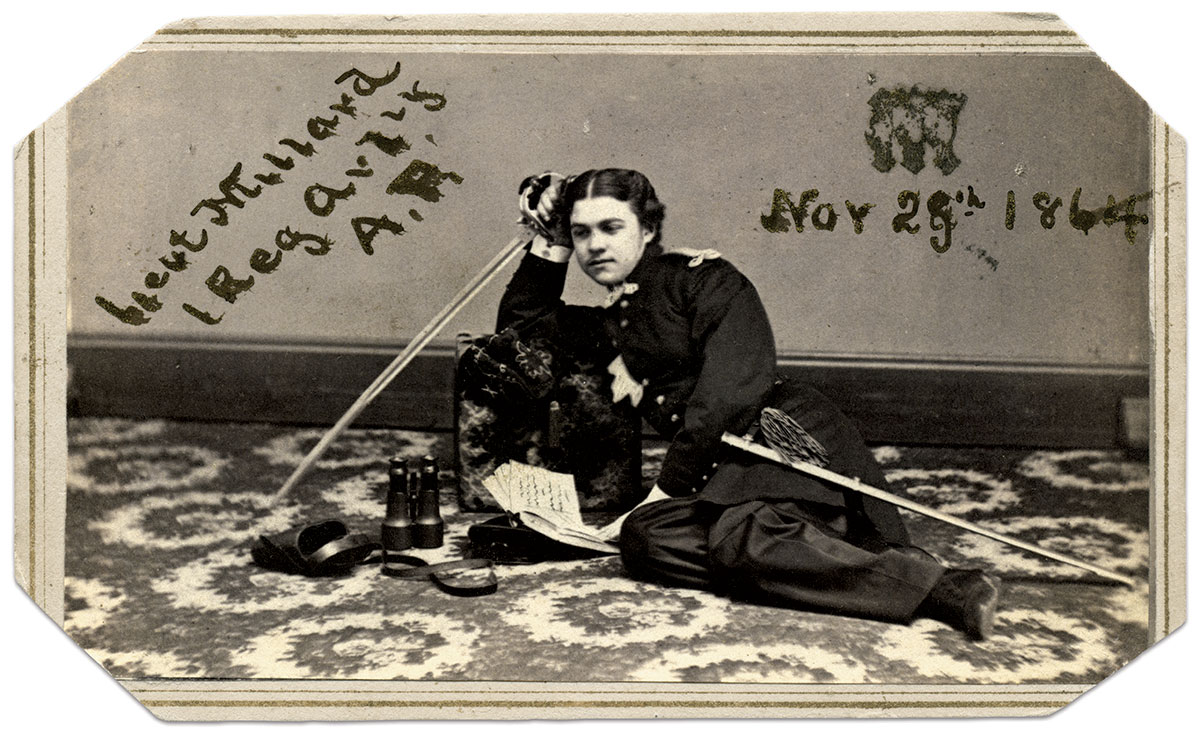
By 1864, romantic notions of war had been replaced by the grim reality of death and destruction. Still, John Aiken Millard, Jr., strikes a pose that harkens back to the heady days of 1861 in this portrait dated Nov. 29, 1864. Wearing a tailored uniform, cuff links and lace handkerchief that befit the son of a wealthy lawyer in Troy, N.Y., he is surrounded by field glasses, a book open to a page with squiggly lines, and his sword arm resting on what appears a waterproofed traveling case complete with a tassel. His cap sits beneath the book.
Millard had just joined the army with a second lieutenant’s commission in Battery H of the veteran 1st New York Light Artillery, assigned to the Fifth Corps of the Army of the Potomac. He participated in the Appomattox Campaign and mustered out in June 1865. Millard died at age 71 in 1914, and is buried in Arlington National Cemetery.
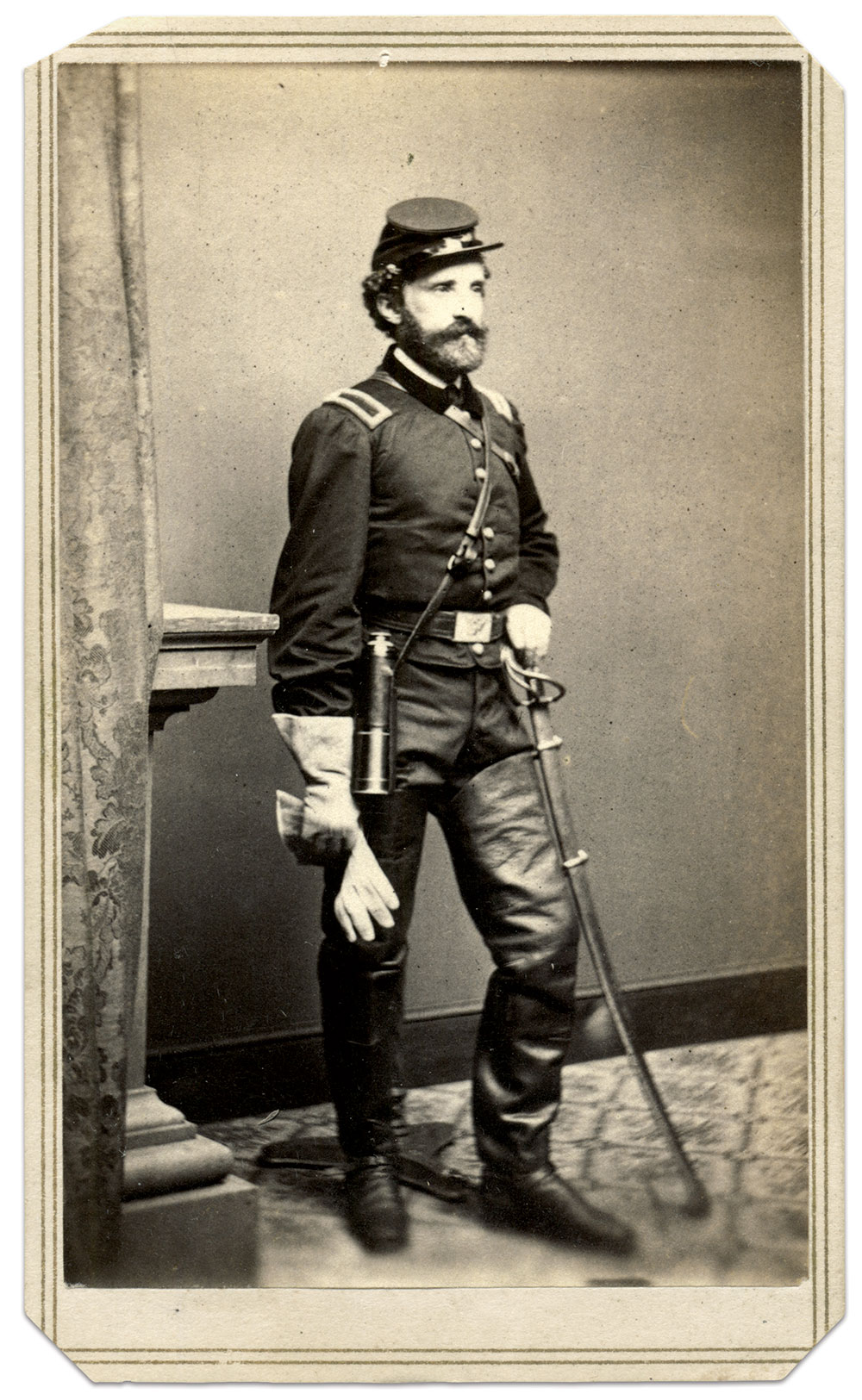
Being in the right place at the right time has its advantages, as Leonard M. Bergen learned a few months into the war. A first sergeant in the 10th New York Infantry, his colonel selected him to be detailed for Signal Corps duty—one of the first groups of men the Union army tapped for the position. Upon the completion of his training, he received his second lieutenant’s straps and formal assignment. He served in this capacity until the end of his 2-year enlistment, and returned to his home and family on Long Island, N.Y., where he died in 1885 at age 52. His wife and three children survived him.
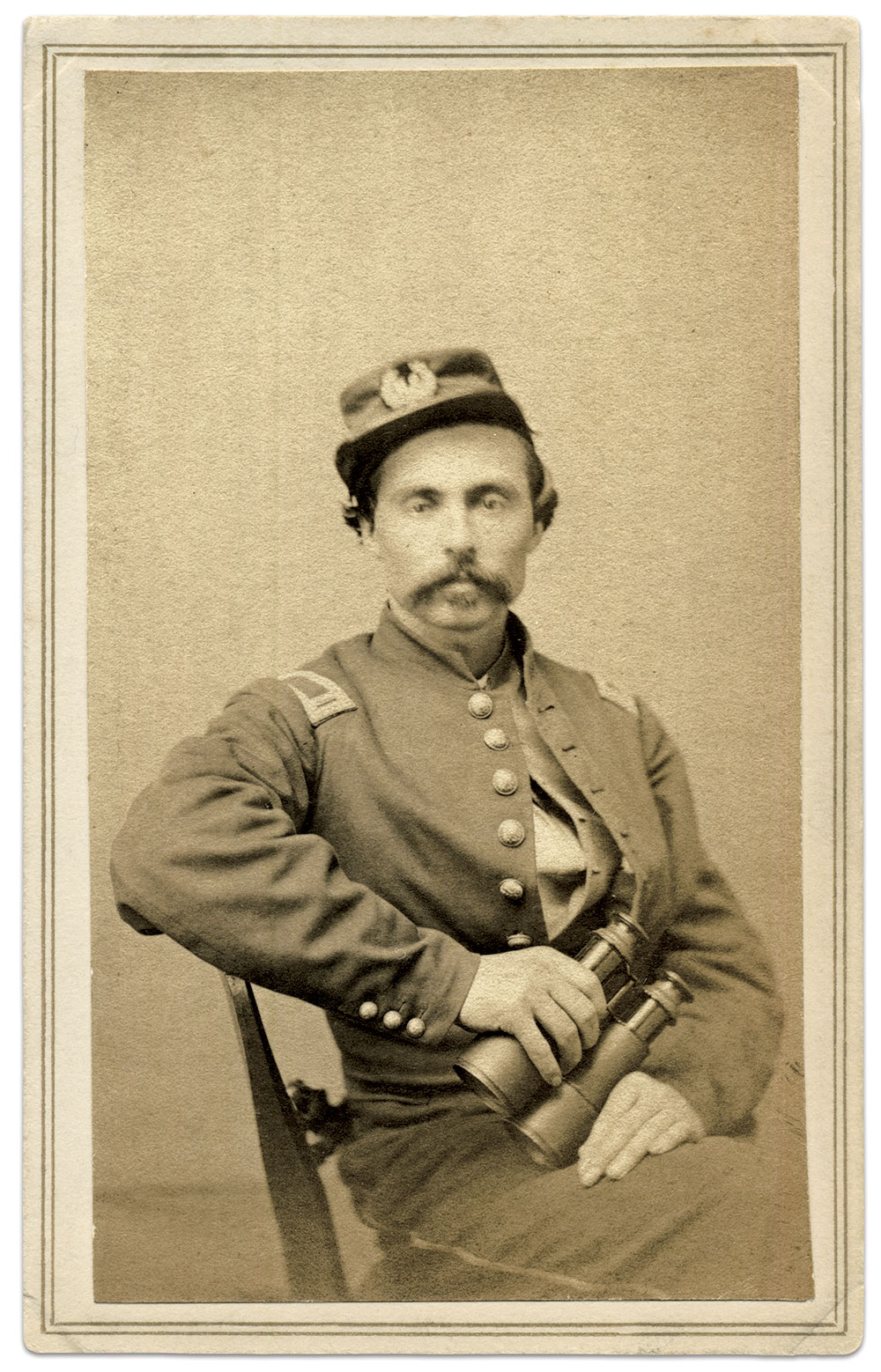
First Lt. James W. Wilson likely put these field glasses to good use in his duties as a Signal Corps officer stationed with the Mississippi Marine Brigade and the Army of Tennessee. With the former organization, Wilson acted quickly to read signals aboard the Adams when it and the rest of the fleet came under enemy attack on April 26, 1863. With the latter organization, he served during early operations in the 1864 Atlanta Campaign. Wilson began his service as a soldier in the 11th Missouri Infantry and ended it with the Corps in August 1864. He died in 1927 in Kearney, Neb.
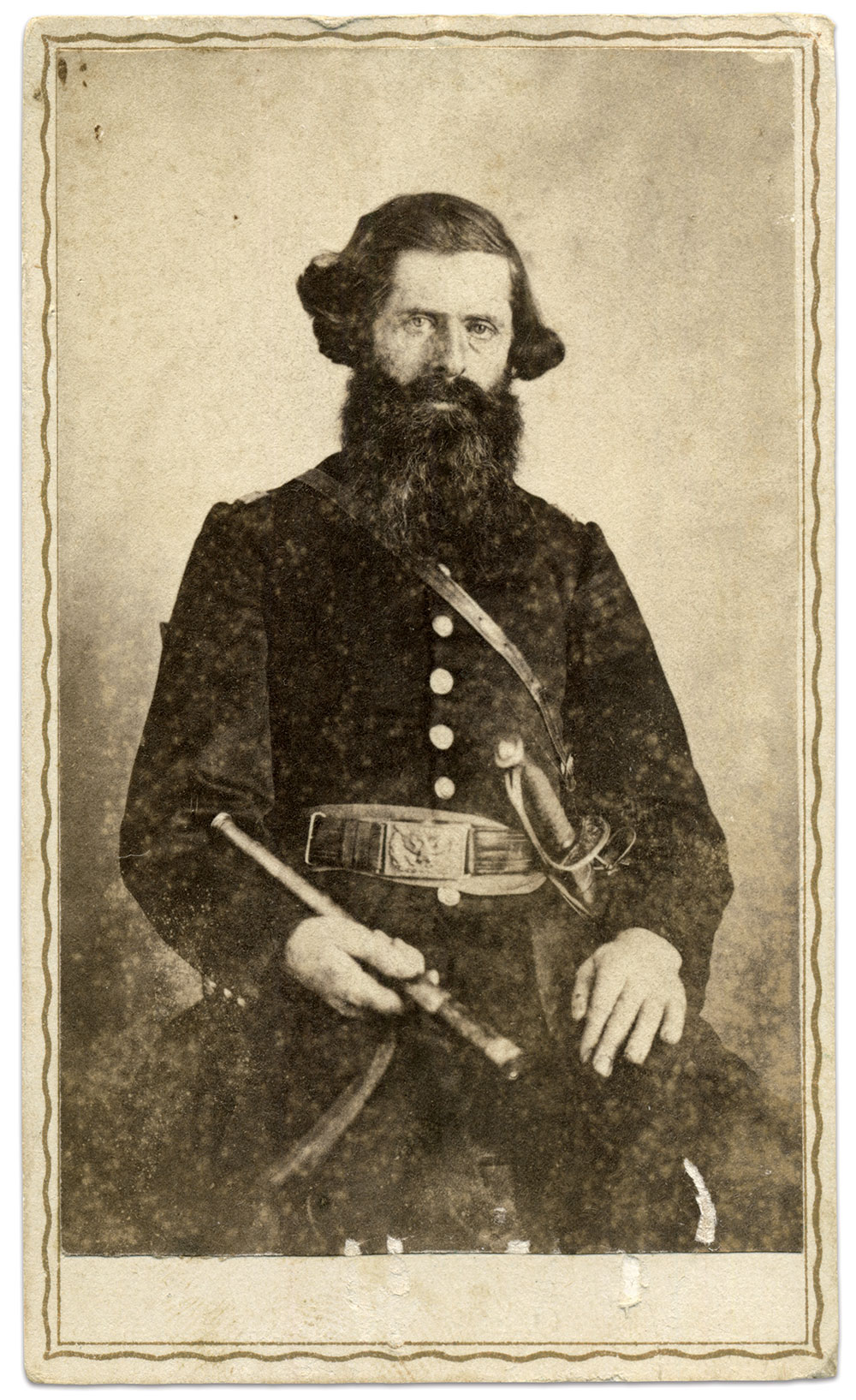
This Union officer cradles a telescope in his arm much as other military men might pose with a sword. A modern pencil notation on the back connects him with the 12th Michigan Infantry.

Benjamin B. Hart, a private in the 24th New York Infantry, gained a reputation as a first-class scout for his division in late 1861 and early 1862. According to a newspaper article datelined from Upton’s Hill in Arlington, Va., where Hart posed for this portrait, he “won by his daring and valuable services a handsome compliment from his regiment. At dress parade a few evenings since, the regiment was formed in a hollow square, and Private Hart was called forward. The Major then complimented him on his soldierly bearing and courageous adventures, and in the name of the regiment, and as testimonial of their appreciation, presented him with a revolver of superior workmanship, a spy glass, a pocket compass, and a set of maps of the region and State of Virginia.” Speeches were made afterward. The report added, “This, we believe, is the first instance in which a private has won such a complimentary notice from his regiment.”
Hart was not able to enjoy the honor for long. In August 1862 at the Second Battle of Bull Run, Hart suffered a severe wound in his right leg that ended in an amputation. Hart succumbed to its effects in November 1862 at age 33.

General officers posed with optics are common to Civil War engravings, but less often seen in portrait photographs. Among the leaders that did so include the Hero of Fort Sumter, who holds a telescope with the lens cap dangling by a piece of string.
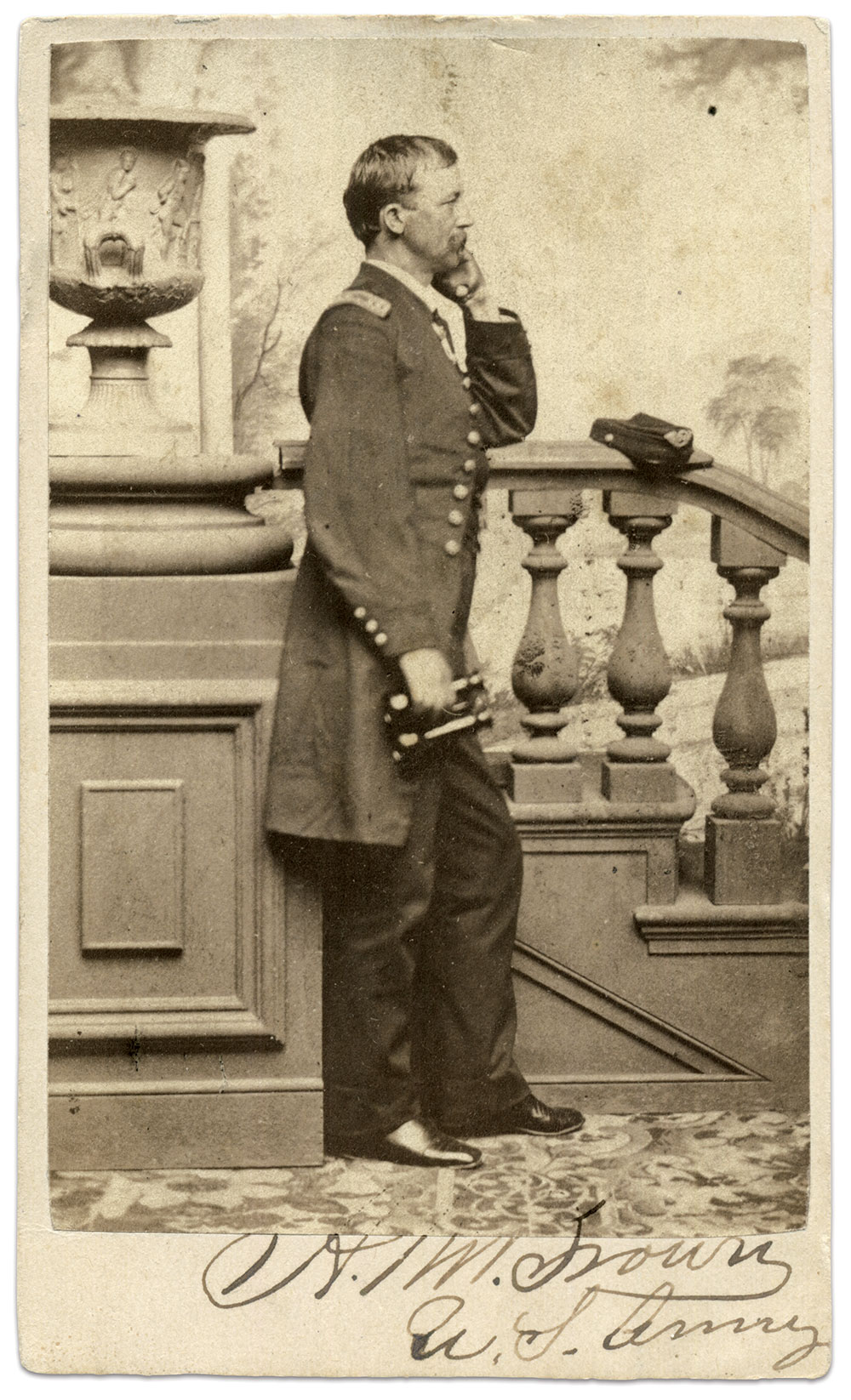
Union Capt. H.M. Brown appears in profile, staring off camera with one gloved hand pressed to his face, and the other holding field glasses. His cap, resting on a balustrade, indicates his service in the infantry. The regimental numbers at the center of the horn are difficult to read. No officer by this name is listed in the ranks of the Signal Corps.
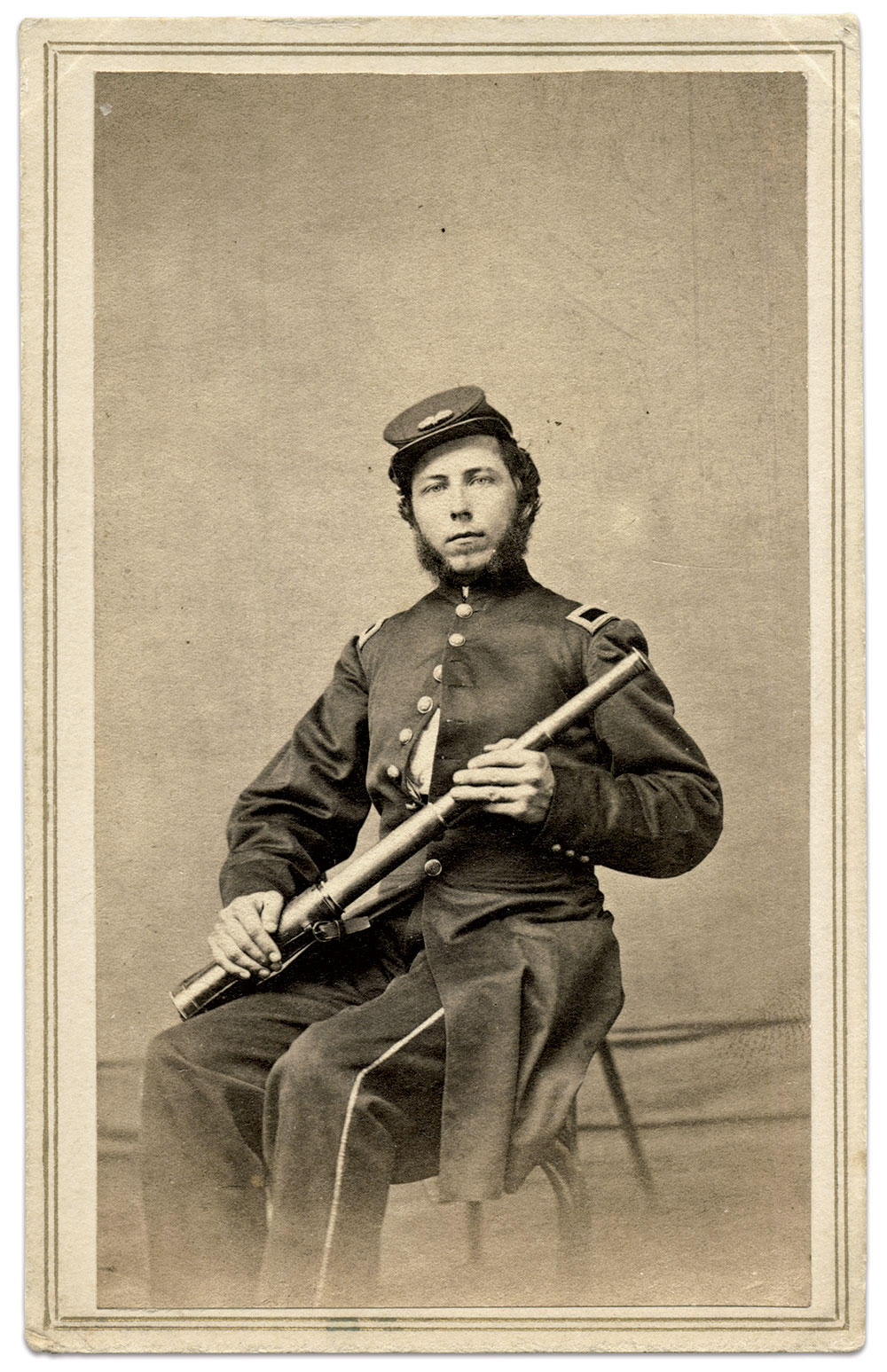
On the morning of Nov. 25, 1864, at Chattanooga, Tenn., Maj. Gen. William T. Sherman’s forces assaulted the Confederate line at Tunnel Hill. Two Signal Corps officers advanced with the troops, including 2nd Lt. Abel Andrew Franklin. A native of Massachusetts who had settled in Iowa and originally enlisted in his adopted state’s 3rd Infantry as a musician, Franklin steadily advanced in rank to second lieutenant. In early 1863, he joined the Signal Corps as part of an expansion of the service in the Western Theater. At Chattanooga, he and a comrade received orders to establish signal stations on Tunnel Hill, once Sherman’s troops took the high ground. Several piecemeal attacks failed to dislodge the Confederates, commanded by Maj. Gen. Patrick Cleburne, and forced Franklin and the rest of the federals back. Franklin remained on duty with the Corps until June 1864, when he mustered out. He eventually settled in Portland, Ore., where he died in 1894 at about age 56.
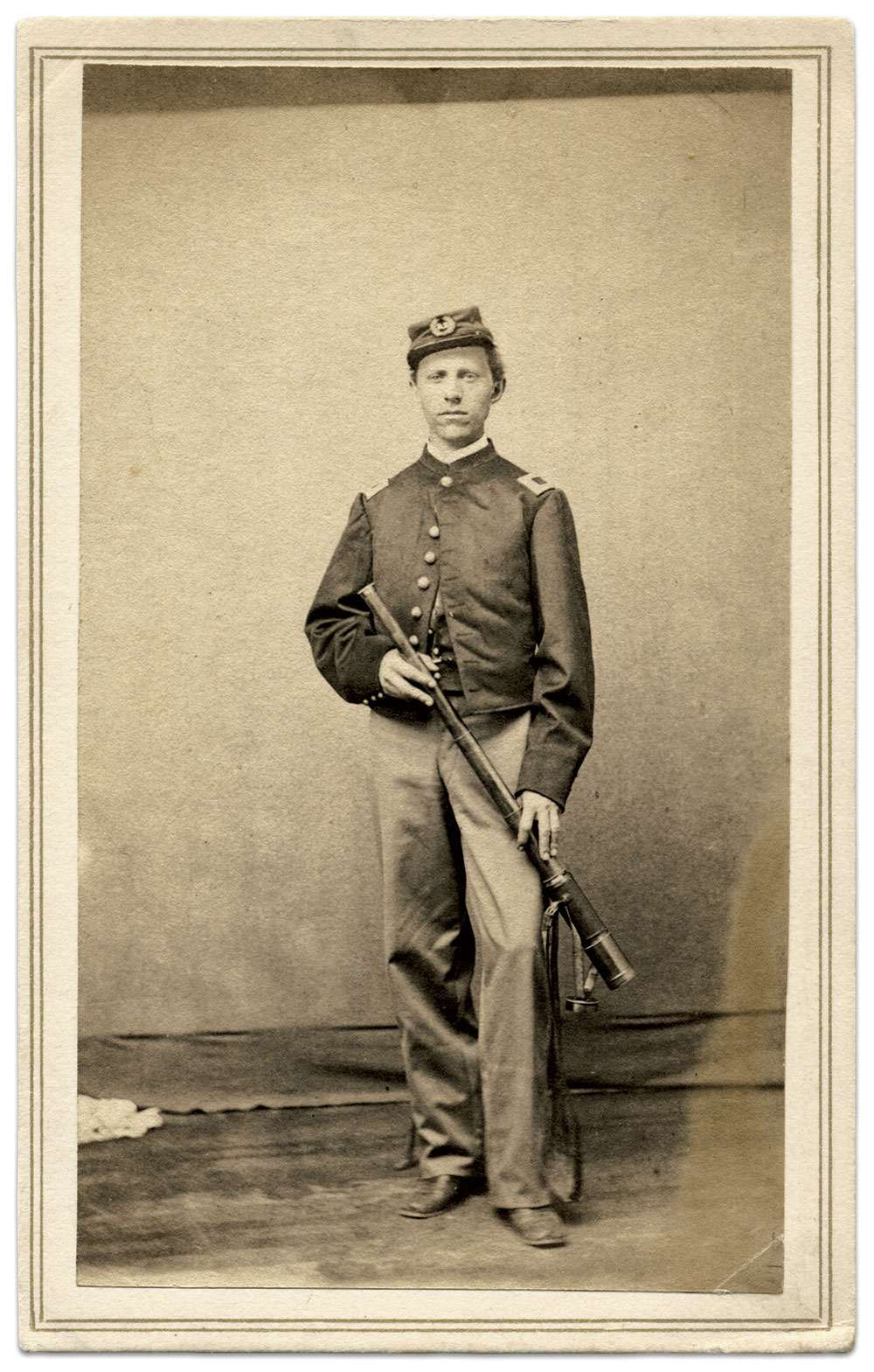
Second Lt. Gustavus Bogislaus Grydén stands with a telescope, his tool of the trade as a member of the U.S. Signal Corps. The Swedish-born Grydén began his military service with the 3rd Missouri Infantry, and was placed on detached duty with the Corps in January 1863. He participated in the Vicksburg Campaign, during which he manned a signal station in the courthouse cupola at Raymond, Miss., and the Battle of Champion Hill, for which he was mentioned in the official report of the senior Signal Corps officer present. He left the service with a disability discharge for malaria in the spring of 1864. A quarter-century later, in 1889, Grydén’s father applied for a pension on behalf of his late son.
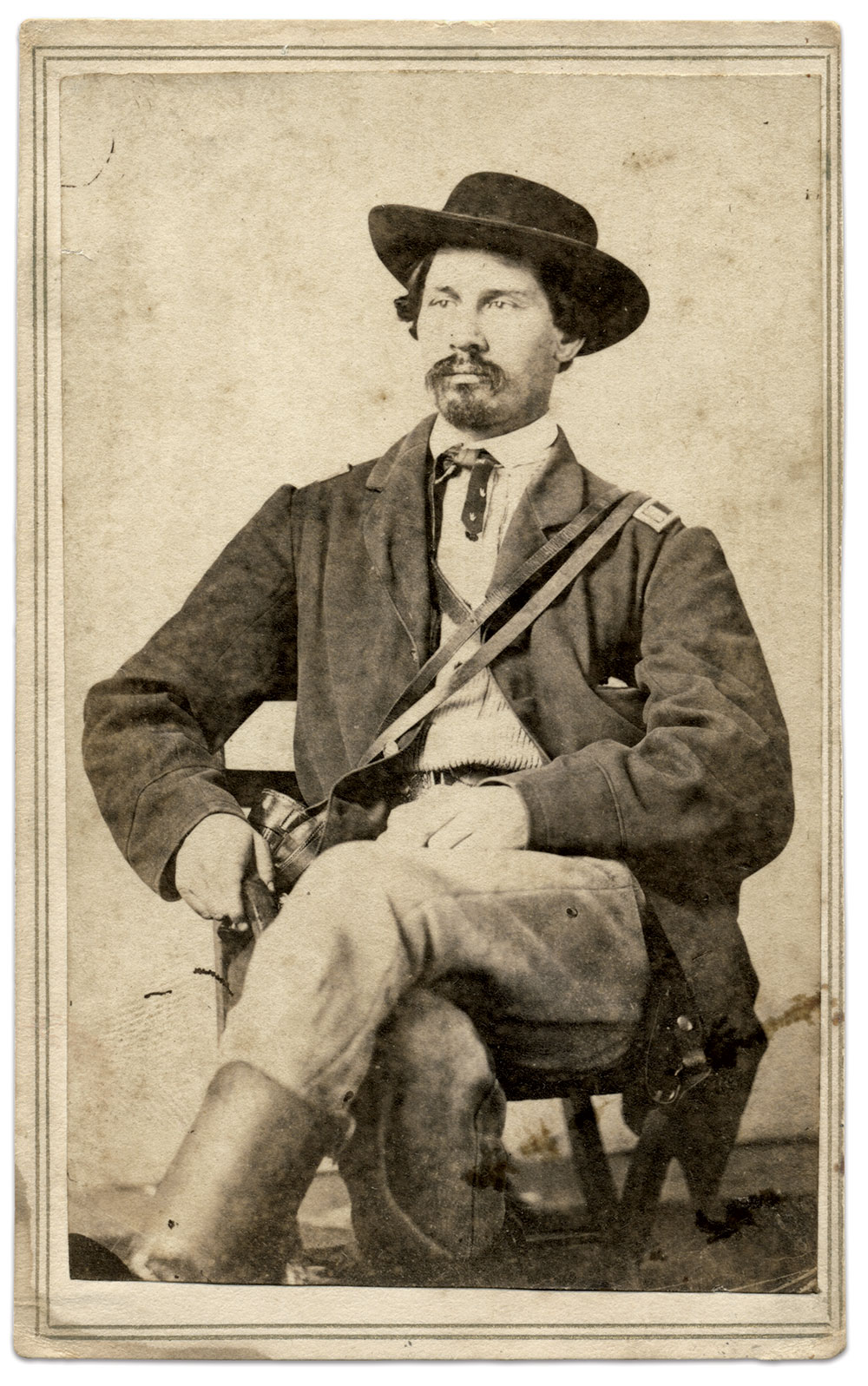
The field glasses case carried by this captain suggests his service in the Signal Corps or artillery. The dark field on his shoulder straps may indicate he was a staff officer.
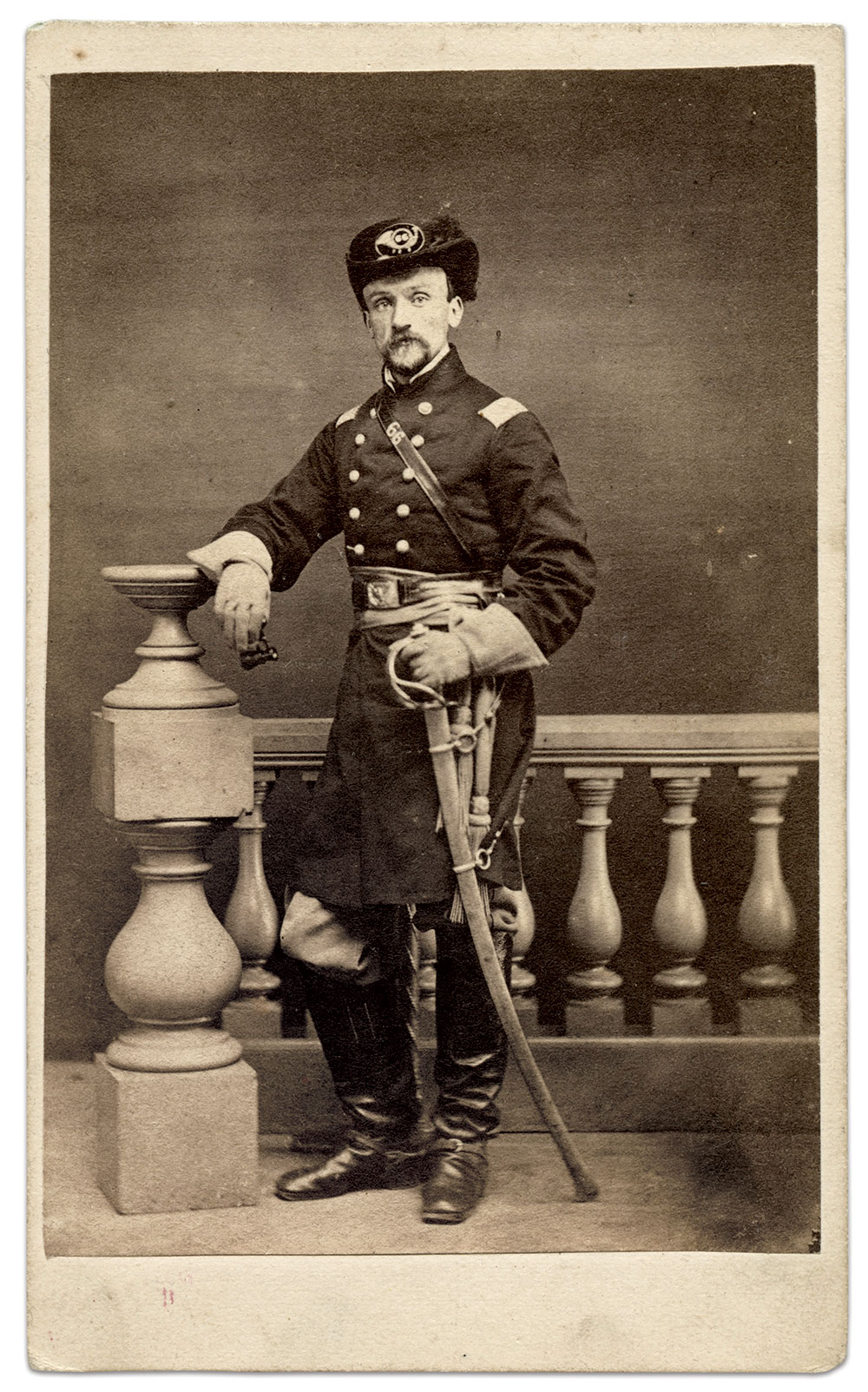
A pair of opera glasses is visible in the gauntleted hand of Maj. Thomas Guthrie Morrison of the 66th Indiana Infantry. A son of Scotland, he organized the Morrison Light Guard, an Indiana militia company, in 1861. He joined the 66th a year later, and appears here wearing his regimental numbers both on his cap and leather sword belt. Morrison commanded the 66th on several occasions during successful operations against Atlanta, which ended with the fall of the city in September 1864. A month later during a raid by Confederate forces on the Union supply base north of Atlanta at Big Shanty, Morrison suffered a gunshot wound to his right shoulder. Surgeons removed more than four inches of bone, which saved him from amputation, and left him with partial use of his arm. He survived the war and lived until 1903.
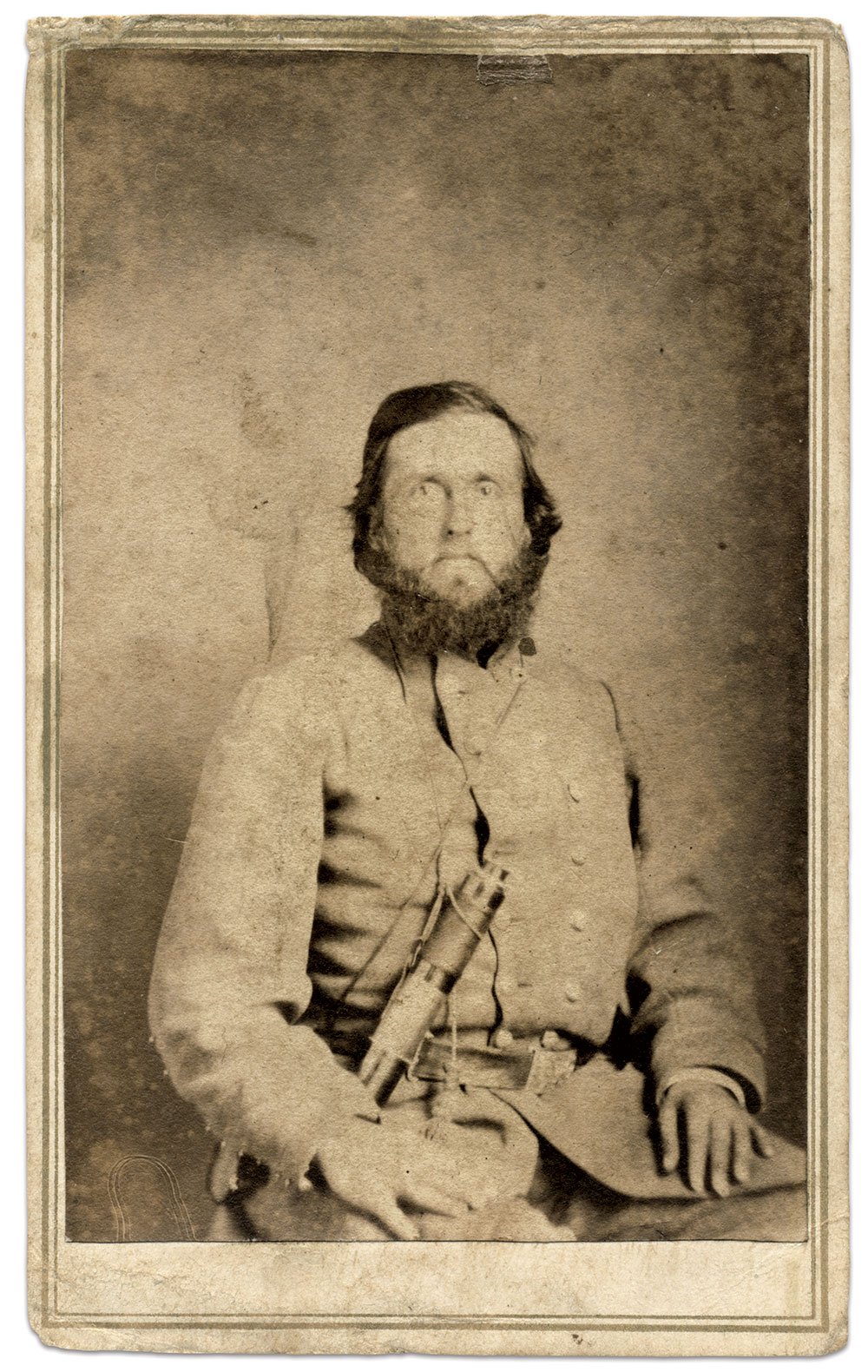
Confederate trooper George Martin Jessee enjoyed a reputation on par with John Hunt Morgan, William Quantrill and Sue Mundy.
A native Kentuckian who held slaves and was active in politics as a state legislator before the war, his first effort to organize troops ended in his capture in 1862. He escaped confinement, and organized a new force, which became known as Jessee’s Battalion, Kentucky Mounted Riflemen, and later as the 6th Battalion Confederate Cavalry. Jessee started as a captain and advanced in rank to lieutenant colonel. In this capacity he led numerous forays, and participated in Morgan’s 1864 Raid into Kentucky that ended in defeat along the Licking River at the Second Battle of Cynthiana on June 11-12. According to one official report, “He was among the last who crossed the river, and everything appearing to be lost, and everyone inspired with but one idea, that of saving himself, Colonel Jesse rallied the remnant of his command and offered an effectual resistance to the repeated assaults of the enemy made on the rear of our broken and flying forces.”
Jessee rebuilt his command and returned to action. He and his troopers, as many as 250 by one count, controlled much of Owen, Henry, Carroll and Gallatin counties in north central Kentucky, opposite Cincinnati, Ohio, in late 1864. Jessee surrendered to Union forces on May 5, 1865, almost a full month after Appomattox. He died in 1896 at about age 65.
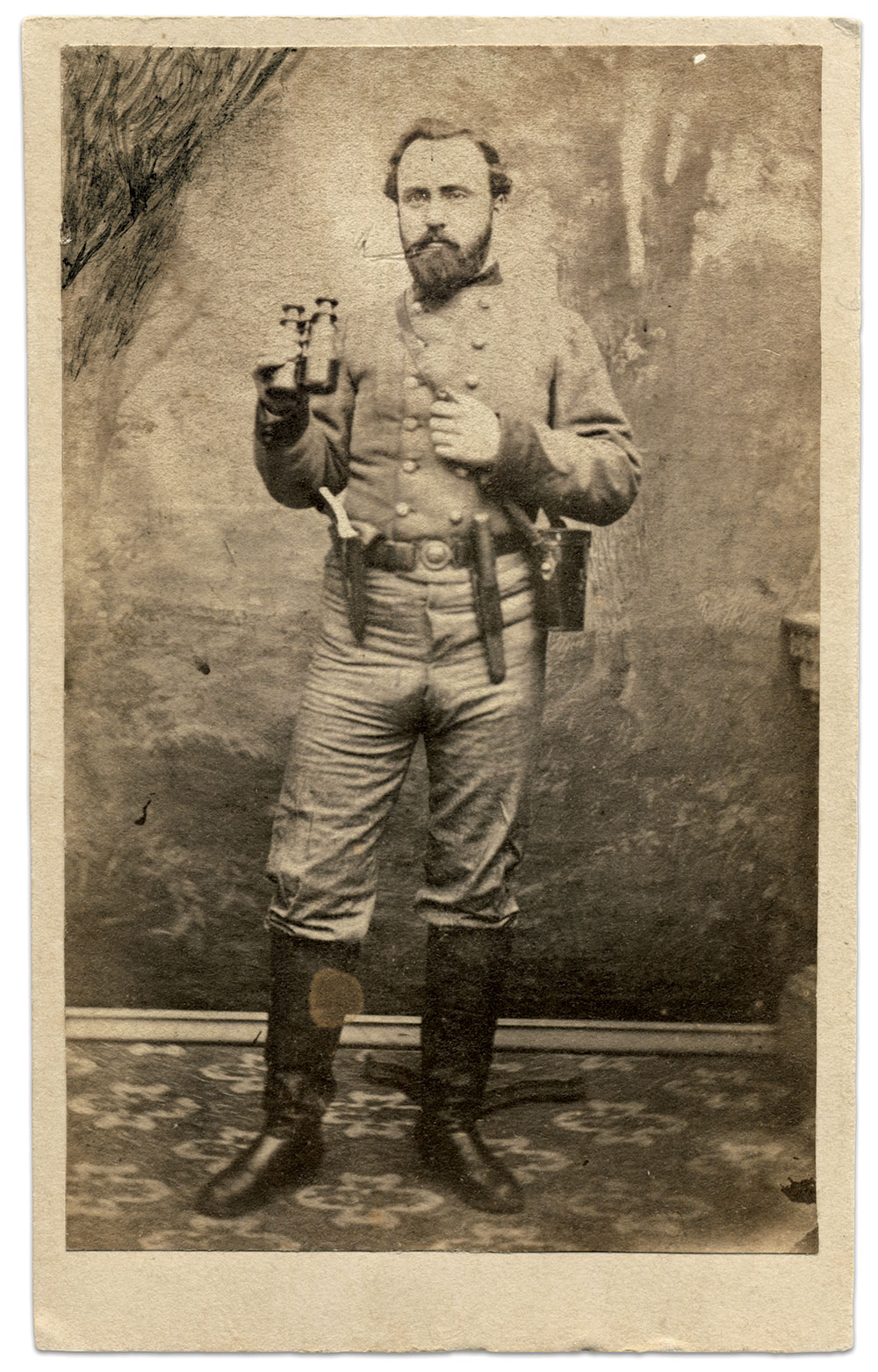
James B. MacLellan lifts his field glasses, which he used regularly as a member of the Confederacy’s Independent Signal Corps. Overseen by Maj. James F. Milligan, the roughly 150-man organization operated mainly in southern Virginia and North Carolina. MacLellan joined the service in the spring of 1862 in Norfolk, Va., and spent the next two years at various stations in this region. In the summer of 1864, he received orders to report to Wilmington, N.C., for duty aboard a blockade-runner. He eventually joined the Wren, a British built steel sidewheel steamer out of Liverpool. The vessel made at least a half dozen successful runs. Its ports of call included Nova Scotia, where MacLellan posed for this portrait wearing a double-breasted shell jacket with dark-trimmed collar and cuffs, and two knives, in addition to his optics.
MacLellan’s name disappears from government records before the war’s end. In June 1865, the crew of the Wren mutinied and grounded it at Key West in an effort to collect prize money. The federal government turned the vessel over to Britain. In 1868, the Wren was renamed the Tartar, and transported disaffected ex-Confederates from New Orleans to the colony of Vila dos Americanos in Brazil.

If a gold medal were awarded for improvisation, Capt. Davis Eugene Castle of the U.S. Signal Corps would have earned one. According to an official report by his commanding officer, “On July 3, when the enemy made their furious attack upon our center at Gettysburg, Captain Castle occupied a signal station at General Meade’s headquarters, near Cemetery Hill, and remained there on duty after all others had been driven away. His flagmen had also left with his signal equipments, under the impression that their officer had gone with the rest. Having occasion to send a couple of important messages to the general commanding, then at General Slocum’s headquarters, Captain Castle quickly cut a pole, extemporized a signal flag from a bedsheet procured nearby, and sent his dispatches through under a most galling fire.”
Castle, who had started his service as a first lieutenant in the 19th Indiana Infantry, survived the battle and the war. He died in 1886.
SPREAD THE WORD: We encourage you to share this story on social media and elsewhere to educate and raise awareness. If you wish to use any image on this page for another purpose, please request permission.
LEARN MORE about Military Images, America’s only magazine dedicated to showcasing, interpreting and preserving Civil War portrait photography.
VISIT OUR STORE to subscribe, renew a subscription, and more.

